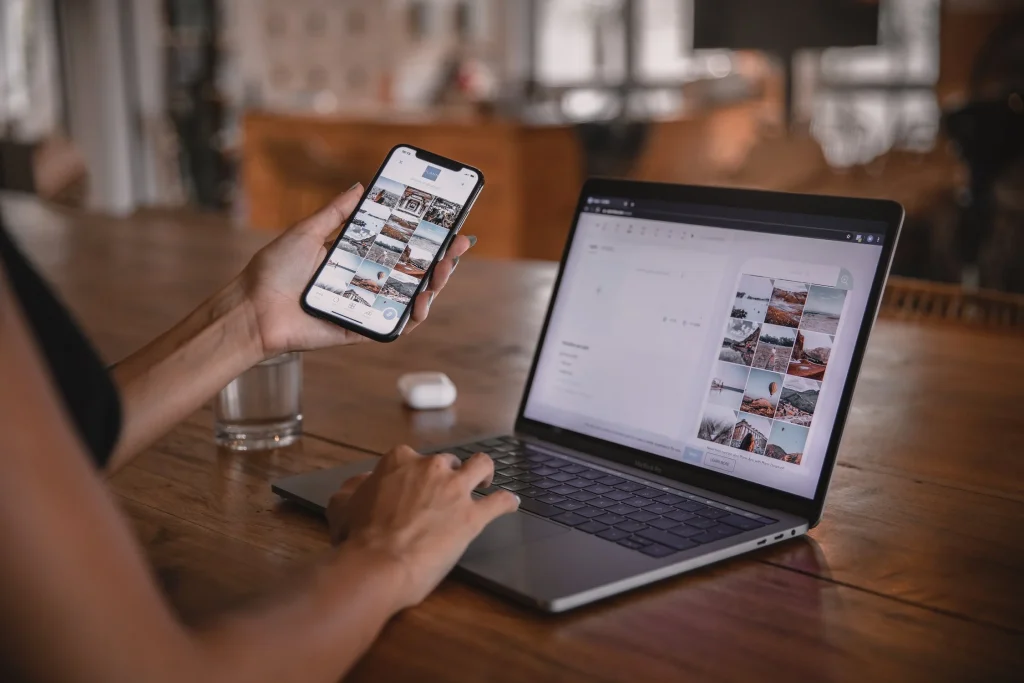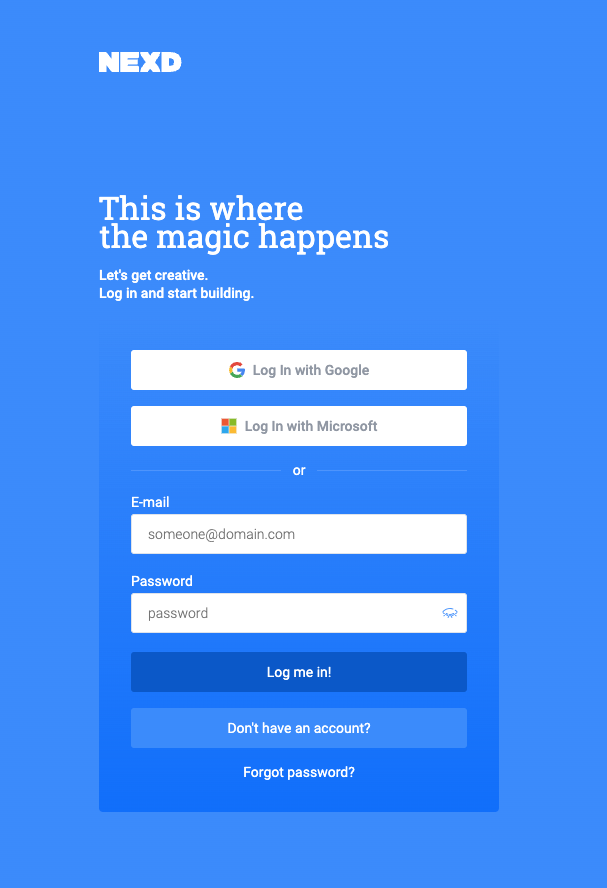A Detailed Guide To Holiday Marketing
Something about the holidays makes people want to get out there and grab themselves a bargain or treat a loved one to show them how much they care. Maybe it’s the cheer in the air, the fear of missing out on all the fantastic deals, or that buzz that comes after a good retail therapy session.
Regardless, marketers are gearing up to finish the year on a high. Planning your holiday marketing campaign is crucial to enjoy this yuletide splurge.

Ready to set your campaign in motion? We’ve created this simple guide to help you launch your holiday marketing campaign and cut through the noise.
First, What is Holiday Marketing, and What Should You Know About this Year’s?
Holiday marketing employs different strategies to promote products or services during the holiday season, typically including Black Friday, Cyber Monday, Thanksgiving, Christmas, Hanukkah, New Year’s Eve, Diwali, Day of the Dead and more.
This year will be no different; people will look to buy gifts for themselves and their loved ones, including hunting for the best Black Friday deals. However, they will be more discerning with their money due to the economic downturn.
To stand out, here are some trends you should keep in mind to run a successful campaign this year.
E-commerce sales will rise
Research shows retail sales worldwide will reach $1.19 trillion this year. That’s a lot of dollars to go around for brands that prepare. If you’ve been putting off planning your campaign or waiting till the holidays, this is enough motivation to get started.
Although sales are forecast to rise, consumers are savvy enough to sniff out ingenuine marketing tactics. Brands that succeed during this period do more than focus on sales. They aim to provide the customers with a great experience.
So, focus on building meaningful connections to avoid being another faceless retailer. One way to achieve that is by strengthening your omni-channel sales strategy. For instance, offering to buy online, or pickup in-store (BOPIS). Gestures like this provide convenience and show that you value their preferences. There are fun ways to introduce these options through interactive ads. Check out our custom coded ads, the options are endless!
Companies will leverage AI for customer support
It is cheaper to keep existing customers than to acquire new ones. Excellent customer service keeps customers coming back. It also positively impacts your revenue.
86% of customers would switch to a competing brand or company if they found out they provided a better customer experience.
To meet these demands, brands will look to leverage Artificial intelligence. Businesses of all sizes can leverage AI customer experience tools to support their customer service efforts. For example, customers can receive instant assistance through chatbots, making their experience seamless.
Social media will be at the forefront of brand communications
With more than half of the world’s population on social media, it makes sense that businesses will communicate with customers via this medium. Focus on driving social commerce and conversion to your website and leverage social media for customer communications.
Test display and video advertising possibilities
The days of dull and basic HTML5 ads are in the past; you can and should get creative with interactive ads. These ads invite the customer to actively engage with the product and entice them into making a purchase. Some common examples of interactive ads include:
- Video ads: Brands can leverage the evergreen power of video to showcase their products, explain how to use them, and add a compelling storytelling element.
- Interactive banners: These are display ads that allow the user to either move and element or engage with the banner in a different way. They can be placed on websites and blogs. Once clicked on, they can lead users to engaging content that helps drive purchases.
- Playable ads: As the name suggests, these very popular ads take the form of games, puzzles, or other playable content to entertain the user while guiding them to making a purchase. Take a look at what fun ads you can make on Nexd here.
Influencer marketing can boost purchases
A survey of 3,500 marketing agencies, brands, and relevant professionals revealed that 83% of respondents believe influencer marketing is effective. In the same study, 80% of respondents have a dedicated budget for influencer marketing in 2023.
Brands will work with social media influencers to promote their products or services to a broader audience.
However, to succeed with influencer marketing, you must decide between macro and micro-influencers. Depending on your industry and goals, one or both may be beneficial. You can find a big global database of influencers from Promoty.
Now that you know the trends in holiday marketing this year, let’s explain how to plan a successful campaign.

How to Create a Great Holiday Marketing Campaign?
Planning a successful holiday campaign can seem overwhelming. But it doesn’t have to be. The idea is to think of it like any other marketing campaign with a sprinkle of holiday magic. Here are six steps to help you plan a successful one.
1. Review your past holiday marketing campaign
There are always lessons to learn from any campaign — successful or not. Analyze your past campaigns and identify what worked and needs improvement. It will help you fine-tune future campaigns.
2. Choose a campaign theme
When choosing a campaign theme, consider the holiday you’re targeting and how it aligns with your brand. Think about what message you want to convey and how it will resonate with your audience.
Whether it’s a heartfelt message of gratitude or a lighthearted celebration, the theme sets the tone for your entire campaign.
3. Set campaign goals
For a campaign to be meaningful, it has to be measurable. This is only possible when you have clear objectives. Goals allow you to outline what you want to achieve and provide a framework for evaluating success.
So consider the results you expect at the end of your holiday marketing campaign. Do you want to acquire more leads, increase revenue, or create brand awareness?
Once you’ve figured that out, you can create a detailed plan to reach those goals.
4. Define your target audience
You now have a campaign objective. The next step is to identify your target audience.

You need to know where they hang out, where they prefer to consume content, and so on. This information will help you tailor holiday messages that resonate with them.
Even if you have buyer personas or customer profiles already developed, take the time to refine them based on the holidays.
During peak selling seasons, understanding your audience is more critical than ever. Use tools such as Google Analytics, Google Trends or do social listening on social media and/or Reddit.
5. Create an attractive offer and landing page
Your campaign initiatives will be centered around the offer you create. So, make sure it appeals to your target audience. Offers will typically be in ebooks, templates, whitepapers, webinars, or exclusive access.
With a good understanding of your audience, you can create an offer that meets their needs. For example, if your audience is usually busy during the holidays, a digital e-gift card is better than an ebook they might not read. To create these offers you can use the help of online tools such as an ebook generator.
After creating an irresistible holiday offer, you need a landing page to showcase it. Whether you buy a domain or use a page builder, make the web page visually appealing and easy to navigate. An accessible page ensures visitors find what they want quickly and take action.
6. Leverage content marketing
An attractive offer and a beautifully designed landing page are great. Also, consider creating guides (such as this one), instructions on how to reduce holiday-related stress or suggestions on making something easier. However, if your content doesn’t get in front of the right people, all your efforts may go to waste. That’s why it’s important to also think about how to distribute the said content.
Make a Plan for Content Promotion
A promotion plan is essential to ensure your content reaches your target audience. Here are some touchpoints to consider:
Segment your list to get the most out of emails. This is important, especially during the holidays, because people receive too many promotional emails. So, well-targeted emails have a higher chance of grabbing the recipient’s attention.
Create catchy subject lines that focus on what the offer solves. Say you provide enterprise payroll software. A compelling subject line can be “Reduce the Stress of the Holiday Season with Our Enterprise Payroll Solution.”
Keep the body of your email concise and use personalization tokens—for example, addressing the recipient by their name. Also, remember to make sharing easy by including social media icons or a “Share this” button in your email. Additionally, as you craft your message, you can ensure email deliverability with DMARC monitoring, which can provide valuable insights into your email campaign’s success and security.
Blogging
You can use your company blog to attract people to your offer in many ways. One way to do this is by creating a promotional post. This post can highlight the benefits and features of your payroll solution, making it enticing for readers to learn more. Include a compelling CTA (call to action) to direct people to your landing page.
Social media
Utilize popular social media platforms like Facebook, Twitter, and Instagram to reach a wider audience. Create eye-catching visuals and engaging captions that include relevant hashtags to maximize visibility. The idea here is to tailor your content to each platform.
Display and PPC (Pay-Per-Click) Advertising
Set a budget for your campaigns and carefully select keywords and ad placements to maximize your reach.
PPC advertising is another effective way to promote your holiday offers. Platforms like Google Ads and other programmatic buying platforms allow you to create targeted campaigns that reach potential customers based on their search queries or demographics. Additionally, you can run more detailed display advertising campaigns using a DSP.
Additional action points to include in your holiday marketing plan
Collaborate with influencers
Influencer marketing continues to be a productive way to appeal to a broader audience. During the holidays, people tend to make impulse buys. So, teaming up with an influencer to nudge them towards your product can be effective — if you partner with the right influencer.
That means an influencer who believes in your product and is confident their audience will respond positively. You must adopt a strategic approach to developing your influencer programs to succeed.
Once you find one that aligns with your brand, you could adopt enterprise collaboration software to streamline communication. You want to ensure everyone is on the same page at every campaign stage.
Track and analyze your results
Once your holiday marketing campaign is up and running, track the performance performance. This will help you understand what’s working and what needs improvement.
Use analytics tools like Google Analytics or social media insights to monitor click-through rates, conversion rates, and engagement. Call center system features like call recording and agent performance tracking can also provide valuable data on customer interactions and overall campaign effectiveness.
Adjust your strategies based on the data you gather to optimize your campaigns and achieve better results.
Track financial progress
During the holiday season, it’s essential for businesses to maintain transparency and adhere to regulatory standards. Implementing the COSO internal control framework can help you establish robust internal controls to safeguard your financial and operational processes. This framework can help identify and assess risks that could impact the success of your campaign.
During a holiday campaign, it is vital to identify risks such as increased demand or supply chain disruption. Recognizing these vulnerabilities allows you to mitigate them proactively and prevent them in the future.
Wrapping Up

Holiday marketing is crucial for businesses looking to capitalize on the festive season.
By understanding the needs of your target audience, creating compelling offers, and leveraging the appropriate channels, you can engage with your customers and drive sales during this busy time of year.
Plan, monitor your campaigns, and adjust your strategies accordingly to ensure success.

Get Started
Sign up to Nexd Campaign Manager for a free 14-day trial and start creating environment-friendly and highly engaging programmatic creatives!
